We use cookies to improve the services we offer you. By continuing to browse this site, you consent to keep them in accordance with our Privacy Policy.
×We use cookies to improve the services we offer you. By continuing to browse this site, you consent to keep them in accordance with our Privacy Policy.
× 6,648
6,648
 19 min
19 min
 1
1

Instagram blogging seems like a dream job in the XXI century. Getting paid for taking pretty pictures and posting them on your Instagram feed – doesn’t that sound marvelous? Yet not many people realize how much work can actually be happening behind the scenes. Considering the amount of competition, creating a successful blog that will really stand out on the market can be one of the hardest challenges within the creative industry.
The good news is, this journey can be exceptionally rewarding since the average Instagram user spends 53 minutes a day on the app. There is a lot to the bright side of blogging that many of us long for. The potential advantages include gaining fame and recognition, becoming an ambassador for various brands, and, most importantly, earning money on things you love doing. Or, alternatively, if you don’t end up monetizing your blog, you can still benefit from getting exposed to the audience from all across the world. You don’t need to study cooking and work in a restaurant to become a famous chef on Instagram. Neither do you need to convince any galleries to exhibit your work – put it online, and if it’s good, eventually it will get noticed.
Whatever your hobbies are, there is a high chance that you can make a blog out of it. But only on the condition that you’re ready to dedicate a certain amount of your time and resources to launching your page, filling it with content and making an effort to promote it to 2.3 billion active users.
Ready to give it a shot? Read on to find out how to start an Instagram blog.
You can skip this step if you already have one and are keen to promote it. If you feel like saving your personal Instagram page to yourself, start a new one and treat it as your work account. Once you’ve registered, go to the settings and switch to a business account. The app will require you to register a Facebook page that will link to your newly created Instagram profile. Follow the instructions to finalize the process.
This step is easy for those who already know what they’re most passionate about. If that’s the case, the only thing you have left to do is to think of a clever name for your new page. However, if you’re unsure of what your future blog should be about, it’s time to do some creative thinking.
There are a few topics on Instagram that are always in trend. It might be a good idea to choose one of those as it will guarantee a certain demand of the audience for the content you create. However, you will have to bear in your mind that the competition within these popular sectors will be extremely tight. You might struggle quite a bit to persuade your target audience that what you post is truly unique and different from what they might see elsewhere. If you succeed in this mission, there is a higher chance that eventually you’ll be able to get a certain income or at least some material bonuses from what you do. Keen to take a challenge? Here are a few ideas on how to become a blogger on Instagram.
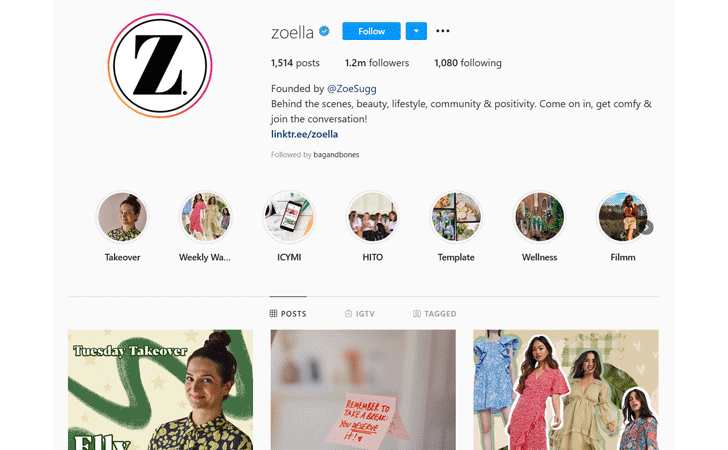
This might be both the easiest and the trickiest one. Basically, it’s all about documenting your life. The challenging part is that you’ll always have to think which parts of your life you should show to your audience to keep them interested. As long as you’re not one of the Kardashians, you probably wouldn’t expect people to follow your life for the plain reason that you exist. Try to think of yourself as a character. Who are you? An excellent time-manager? A mother who manages to cope with 5 kids? A stranger in the new city discovering it for yourself? Decide on your image and share your insights, tips and advice with everyone who might find them useful. Put loads of effort into creating really pretty visuals and do some quality writing.
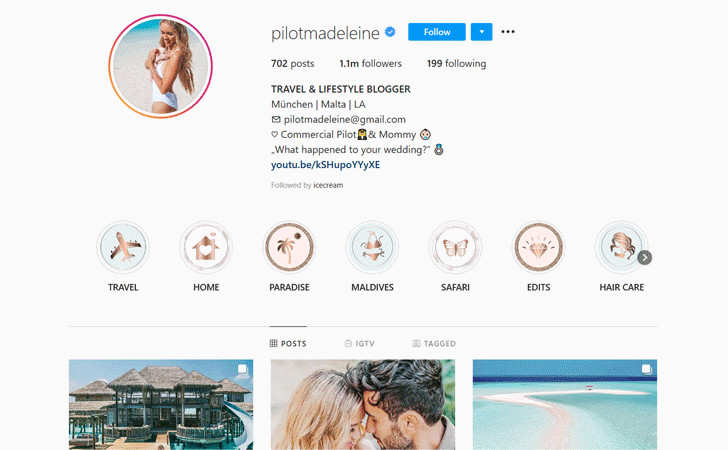
The last few years made the industry of travel blogging literally explode. Ready to ride this wave? Great – now visuals are your everything, and topping them with the right textual content increases your chances of survival. Try to be original: rather than posting the most famous monuments and places of interest, look for hidden gems and unusual angles. Add some variety to your pretty views by taking pictures of the locals and streaming some action on your stories. Oh, and speaking of the latter ones – don’t forget to gather them in your highlights and name those properly to navigate your audience through your journeys.
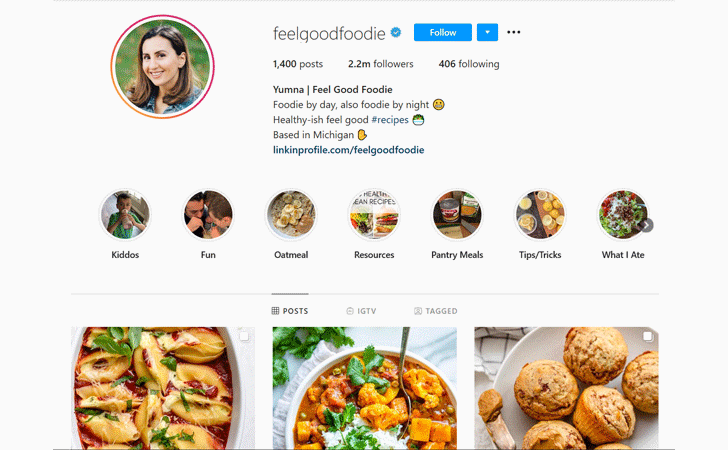
If food is your biggest passion, it’s time to shine. Share your best recipes with the world by posting them on your Instagram feed together with aesthetic food photographs. Mind that the competition in the cooking sphere is high, too, so it’s worth studying some basics of food photography and food styling. The more atmospheric your pictures eventually look, the better the impact you get. This is a great way to promote your YouTube channel or your personal website along with Instagram: tell your followers that the full recipes are available via the link and put it into your profile.
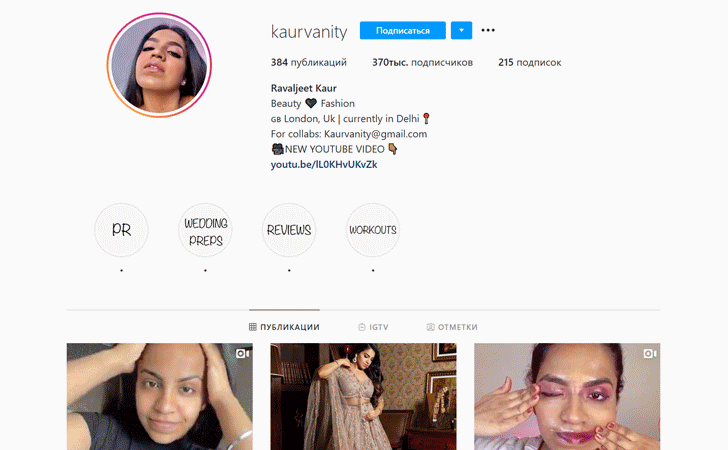
The most suitable niche for everyone who is crazy about makeup and beauty products. The biggest investment it requires is actually buying those products, but don’t you do it anyway? Other than that, the sky is the limit. Experiment with your image, post tutorials and advice, invent DIY beauty mask recipes, invite your followers to vote for the best makeup of the week and showcase your creative process on Instagram live. You don’t even have to ever get out of your house – as easy as that.
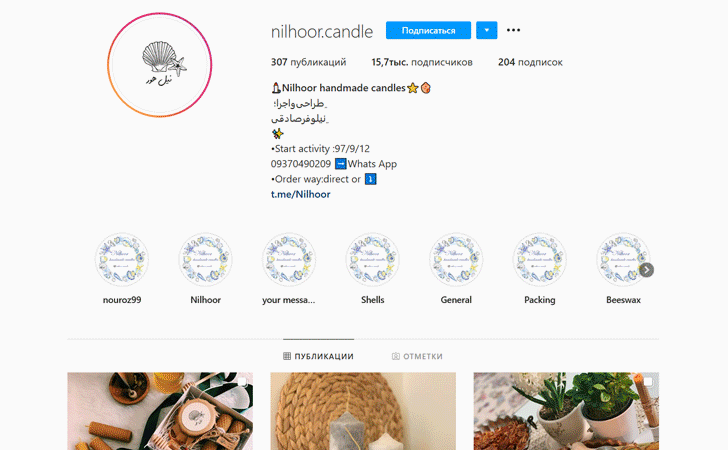
If you’re all about creating something, here’s your chance to get noticed and even sell your work. That’s how many small businesses start these days, so don’t underestimate this promotion channel – be prepared to do the shipping! Showcase your work, reveal the making-of process, host giveaways for your followers and keep creating!
Or just do whatever you want. After all, it’s all about how you tell your story rather than what it’s about.
Pay attention to how your profile is arranged. Make sure you have your name (or your pseudonym stated clearly in the upper part. Your description should briefly explain what you do. Include all the necessary contact details in the relevant fields. If you want people to reach you for cooperation, make it easy for them to do that.
While you’re just starting out, it doesn’t have to be a strict plan. However, you need to brainstorm enough ideas to keep going for a while. Decide how often you are going to post, what makes the best content for your feed and what would look better in Stories, and ideally start composing the outline so that it looks organic and consistent. In the meantime, make sure to post to Instagram from PC so that your content has a better quality. Hold yourself back from posting lots of pictures in one turn. Equally, don’t let your account stay still for too long – the Instagram algorithms are merciless.
Find out which hashtags are most popular for your topic of blogging. The maximum number of hashtags you can use is 30. Try to come up with at least 10-12 and put them under each of your posts. This will make it easier for your target audience to find your pictures. Geotagging is another trick used by the majority of bloggers and brands on Instagram. Whenever you’re actually in some famous spot, tag it. When you’re not, think of a location that could be popular with your potential followers and use its geotag for your next post.
It’s not just about the content, but it’s the quality that matters a lot on Instagram. Remember this social network was first created as a visual platform, so use it wisely. Now, you probably don’t feel like spending a fortune on professional photography equipment for the sole purpose of taking better pictures for your blog. You don’t have to do that, either. Here – we’ve compiled a list of essential equipment for all the amateur blogging enthusiasts: the biggest investment is obviously a smartphone, but you probably have it anyway. Even if you don’t have the latest model yet, maybe it’s time to buy one: after all, once you start making your way into blogging, you’ll need it more than ever.

Most often you don’t even need to invest in a high-end camera unless you are launching a professional photography blog (and in that case you probably have the right equipment anyway). An up-to-date smartphone should be just enough as long as it has all the necessary features. You will most likely need one of those models with multiple cameras that allow you to take wide-angle pictures and portraits. iPhone 11 Pro is reportedly one of the best options on the market, as quite a few travel bloggers out there post pictures under the hashtag #shotoniphone11pro. If you’re not an Apple fan, have a look at its rivals such as Samsung Galaxy Note 10+ or other gadgets with the same capacities.

If smartphone is your main tool for taking pictures, there is no need to spend another ridiculous sum of money on expensive photo lens. However, you still need to buy some accessories of this kind to make the best out of your phone camera. Fetch yourself a set of LUXSURE Professional Iphone Lens 3 In 1 to take your macro and scenery to the next level. The whole set is really small so you can easily carry it around in your bag. It’s also relatively cheap – most sets of this kind cost under $30.
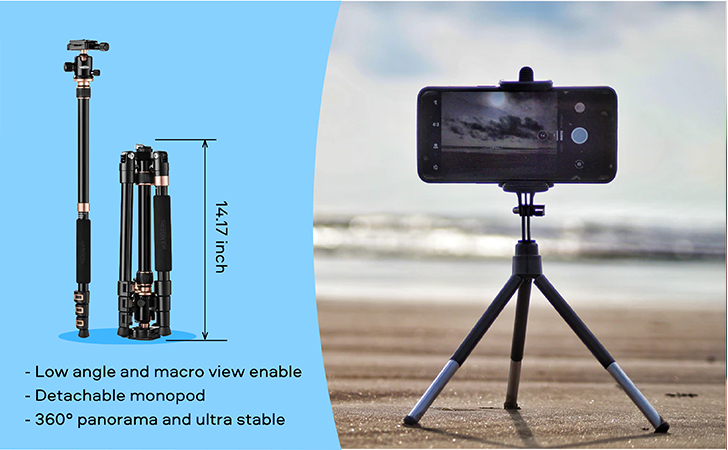
Most still pictures will turn out better if you use a tripod to fixate your phone. This particularly applies to the shots you attempt to make in low light. You may also find this tool useful when streaming some selfie stories. Opt for a lightweight model so you can carry it around with you. Ideally you should be able to fit it into your travel backpack. Some smartphone-oriented tripods can even be transformed into a selfie stick, which is even better for obvious reasons: you can use it for taking pictures and capturing videos both indoors and outdoors. Backpacker Air Tripod is said to be quite good in that aspect – a bit pricey but might be worth considering if you’re really serious about the blogging business. Or pick something cheaper like TYCKA Rangers 56” Compact Travel Tripod – a bit heavier, but pretty much just as good.

You might associate light rings primarily with portrait photography. However, this simple tool is capable of much more than you could imagine. Yes, it’s an absolute must-have tool for any beauty blogger as it helps create stunning portraits. However, it’s equally efficient when it comes to lighting still objects including artworks, food and makeup items. Opt for a model that features a tripod stand and a phone holder, so you can use this tool for live streaming and capturing stories. Check out popular options such as Villsure LED Ring Light, as it’s not too expensive and does the job just fine.
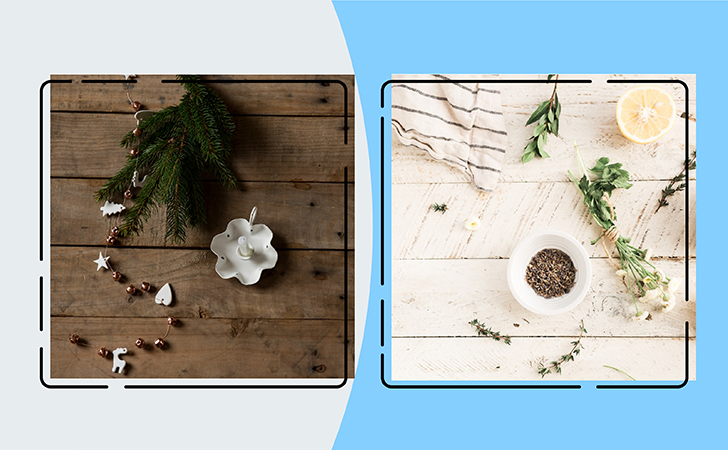
This is particularly relevant for shooting indoors and vitally important for flatlays. Obviously you wouldn’t want to make selfies with a messy bedroom on the background. Or pile your beauty products on your work desk (unless there is a lucky coincidence that you have a really pretty desk of some custom-made design). Or take pictures of your genius dishes on your kitchen table (meaning you have to clean it up first, keeping everyone else waiting for you to finish – and finally start eating!).
Some backgrounds, canvas and backdrops can be purchased online on Amazon, others you can make by yourself. Search on Pinterest and YouTube – you’ll find many DIY ideas for every occasion. For example, take a look at this tutorial for a rustic food photography background:

Sometimes your pictures might turn out so good that they don’t need much editing. In that case, you might get away with applying minor corrections – like enhancing exposure, increasing contrast and changing the temperature. Most smartphones feature some built-in editing tools. You might also want to check out designated apps like VSCO, Facetune and other popular software solutions.
If you’re looking to dive into more serious retouching, it’s best to start by learning to edit pictures on a bigger screen. This way you’ll see more detail and apply the instruments more precisely. Choose an editing program that gives you an opportunity to experiment. Ideally you should be able to retouch faces, change colors of certain objects (e.g. your hair), remove objects from the background and apply filters. All the basic options of amending exposure, contrast, saturation and temperature should be included by default.
We don’t recommend digging straight into professional software as it will take a solid amount of time to master. Start with something fairly easy to use: we strongly recommend trying out Movavi Photo Editor, as you have a whole free trial period to decide if blogging is your thing.
While planning the posts may require quite a lot of time and effort, putting up stories can be much more relaxed. Talk to your viewers, show something interesting that you see around yourself, reveal the backstage of your shoots, and so on. As you keep on mastering new instruments, it’s worth trying out some specific tools for designing stylish Instagram stories with animated elements, logos, fonts and other features.
Your business account on Instagram allows you to track your audience’s activity on your page. It’s best to watch a couple of tutorials to familiarise yourself with it. In short, this data can help you figure out which hours of the day are best for publishing new posts, where your viewers and followers are coming from, what is their average age, and so on. Take this knowledge into account when planning your next publications. Social Media Monitoring is an essential tool for any blog in today’s social age. It can help you avoid many potential pitfalls and problems with your content, as well as provide invaluable insights into what kind of information on the site might be successful or not so much at attracting traffic.
There are many ways of getting yourself noticed on Instagram. Some of them are free, some of them require some financial measures. Start by subscribing to larger blogs with a similar target audience. Be active in the comment section: articulate your opinion (just don’t forget to stay polite!), ask questions and talk to other followers. Participate in competitions, SFS and flashmobs.
Paid options include target ads and commercial posts in popular accounts. The latter ones don’t always require money to be invested. Sometimes you can offer a bigger blogger something in exchange for advertising your page: this can be some service that you can provide, your craftwork, a free photoshoot, etc. Don’t be afraid to reach other people with your offers – you never know, as it can that’s exactly what they were looking for.
Even though Instagram was initially designed as a platform for photographers where they could publish their work, obviously it’s no longer the case. Instagram has grown into a self-sufficient social network with an enormous amount of valuable visual and textual content being published every second. If you’re really looking to succeed in this business, you’ll have to mix both ingredients – high-quality visual content and engaging writing.
The latter one doesn’t necessarily mean producing long essays for each of your pictures. Unless you feel like it, of course – however, in this case we’d suggest using designated platforms that are better-suited for textual content. Your writing has to be on point – that’s it. Some posts can be really short, others can be quite long – there is no universal rule for Instagram writing.
Here are a few examples of how you can boost your Instagram blog by writing more:
If your blog is all about the visuals, try to tell your audience the story of each shot. Help them learn something about the location, the characters, the thoughts behind the image. Alternatively, you can write about your techniques and lifehacks for making a perfect composition, getting the most out of the natural lighting you have, your photography equipment, and so on.
Lifestyle blogs are all about personal experience. Whatever you’re up to in your daily routine, try to think in stories. Don’t overload your readers with pointless reports, either. Consider which stories they might find amusing, what they could relate to, and what could teach them some lesson. Try gathering your tips and advice into checklists – everybody loves checklists because they’re fun and easy to use.
How-tos are everything. Share your recipes and DIY instructions under your pictures and/or videos – your audience will appreciate it a lot. Don’t forget to encourage everyone who gives them a shot to post the results and tag you – it’s a great way to interact with your subscribers and add some diversity into your content.
Reviews of different brands and products along with your tips on how to use them will help you gain the most out of your blog. Add some “Before/After” posts – and you’ll nail it. Again, encourage your subscribers to share their experience of using your instructions and tutorials.
If your blog is dedicated to studying, you have a large variety of content forms to choose from. Vocabulary lists, tutorials, daily tips, stories from your teaching experience, inspiring quotes and even memes related to your subject – the more, the better.
That’s where textual content can be even more important than visual. There are hundreds of travel blogs out there showcasing stunning pictures from all over the world, but there are far fewer blogs with sincere reviews, non-trivial lifehacks and truly engaging stories. Instead of posting all those typical sunsets and cocktails with the sea in the background, show vibrant pictures reflecting what your trip was really like, how you organized it, what helped you get through, and so on.
Do you want to edit video on your phone?
Download Movavi Clips for Android
Starting an Instagram blog may now seem unbelievably difficult, but it’s not that hard once you maintain the habit. There’s actually only one universal advice for all amateur bloggers out there: be passionate about what you’re doing. There is no need to start a blog if you don’t really enjoy it. You have to feel this urge to share your vision, your knowledge and your stories with the world. If it is there, it’s going to be much easier to find the right ways to express it.
If you’re struggling to do everything properly at once, start little by little. Start putting some more effort into your regular Instagram posts. Try experimenting with the composition while taking the pictures. Write longer texts and ask your friends for the feedback. See how you feel about doing it. If you still enjoy it, start doing it every day. Little by little you’ll either get fed up or get used to blogging.
At some point you might consider taking up courses in copywriting or photography to take your skills to the next level. Quite often you may find that your favorite bloggers teach those, so you can learn directly from those who’ve already achieved something in this sphere. Use this chance to upgrade yourself – you never know where this journey will eventually take you. You might not end up running your own blog, but these skills will definitely make it possible for you to switch jobs or find an extra source of income. Which isn’t bad, either!